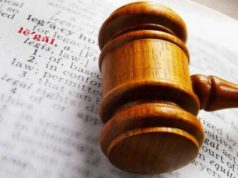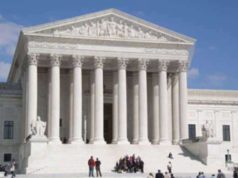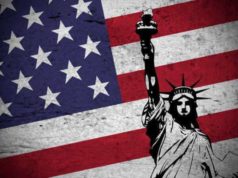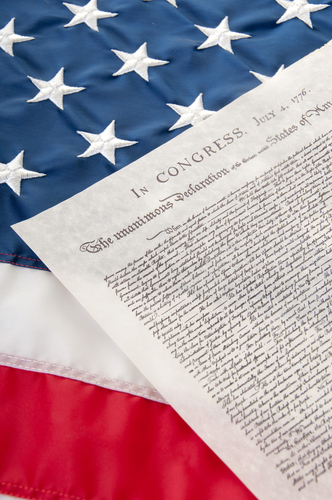Table of Contents

Introduction
Article 3 of the United States Constitution outlines the powers, structure, and duties of the Federal Judiciary of the United States, including the Supreme Court. It is one of the most important and significant articles in the Constitution, as it established the system of courts and judges that interpret and apply the law to ensure the rule of law, justice, and national unity. In this article, we will explore the meaning and implications of Article 3 of the U.S Constitution and how it has shaped the U.S. judicial system.
Historical Context
Article 3 of the Constitution was adopted in 1787, during the Constitutional Convention in Philadelphia. The delegates who drafted the Constitution recognized the need for an independent and impartial judiciary to interpret and apply the law. They drew upon the experiences of the British common law system, which had established the principle of judicial review and an independent judiciary to protect individual rights and prevent tyranny.
Structure of the Federal Judiciary
Article 3 establishes the structure of the federal judiciary, which consists of one Supreme Court, and such inferior courts as Congress may from time to time ordain and establish. The Supreme Court is the highest court in the land, and its decisions are binding on all other federal and state courts. The Constitution gives Congress the authority to create lower federal courts, which help the Supreme Court manage its caseload.
Jurisdiction of the Federal Judiciary
Article 3 defines the jurisdiction, or the authority, of the federal judiciary. The Constitution grants federal courts jurisdiction over certain types of cases, including disputes arising under the Constitution, federal laws, and treaties, and cases involving foreign governments and diplomats. Additionally, the Supreme Court has original jurisdiction in cases where a state is a party or when a foreign diplomat is involved.
Trial by Jury
Article 3 of the Constitution also guarantees the right to trial by jury in criminal cases. This protection is essential to ensuring justice and ensuring that individuals accused of crimes have a fair and impartial trial. Juries are made up of ordinary citizens who hear evidence and testimony and make a determination on whether the defendant is guilty or innocent of the charges.
Tenure of Judges
Article 3 outlines the tenure of judges, including Supreme Court justices. The Constitution grants judges lifetime appointments, subject to good behavior. This provision ensures the independence of the judiciary and protects judges from political pressure or interference from other branches of government.
Power of Judicial Review
Article 3 gave the federal judiciary the power of judicial review, the power to declare laws and executive actions unconstitutional. This power is not explicitly stated in Article 3 but is derived from the Constitution’s system of checks and balances and the principle of separation of powers. The Supreme Court established the power of judicial review in the landmark Marbury v. Madison case in 1803, which gave the Court the right to declare an act of Congress unconstitutional.
Implications of Article 3
Article 3 is one of the most significant articles in the Constitution, as it established the structure, power, and jurisdiction of the federal judiciary. The article ensured that the judicial branch would be independent of the other branches of government, impart impartial justice, and serve as a protector of individual rights and liberties.
The power of judicial review, which is derived from Article 3, has been critical to the development of American law and democracy. Judicial review allows the judiciary to ensure that laws and executive actions do not violate the Constitution or infringe on individual rights, even if those actions have been approved by the other branches of government.
The Supreme Court, which is established in Article 3, has played a vital role in shaping American law and political culture. The Court has made landmark decisions on issues such as civil rights, free speech, and privacy, helping to define the scope and limits of individual rights in the United States. The Court’s decisions have sometimes been controversial, but they have contributed to the development of American law and democracy.
Conclusion
Article 3 of the U.S Constitution is a crucial component of American law and democracy, outlining the powers, structure, and duties of the federal judiciary. The article established the Supreme Court as the highest court in the land, tasked with upholding the Constitution and interpreting federal law. Article 3 also granted the power of judicial review, allowing the judiciary to ensure that laws and executive actions do not infringe on individual rights or violate the Constitution. It is an essential article in the Constitution, ensuring the rule of law, justice, and national unity.The creation of the United States Supreme Court came about in Article III on “The Judicial Branch” of the Constitution.
The essential concept of a United States Supreme Court is dealt with in Section 1, “Judicial powers,” while the operation of the United States Supreme Court toward the American legal the system as a whole is dealt with in Section 2, “Trial by Jury, Original Jurisdiction, Jury Trials.”
While all of the subsequent shapes and functions which have been taken by the United States Supreme Court have derived their Constitutional basis from these Sections, the language they contain, as is the case throughout the Constitution, are broad enough to allow for flexibility in interpretation and responding to new challenges. The manner in which these generally understood terms have affected American history has often been determined by their earliest implementation. The Constitution suggested the scope of powers be given to a United States Supreme Court, for instance, by specifying “Cases” and “Controversies.”
The pertinence of these rules to the actual United States Supreme Court, however, was established by the Chief Justice himself, John Jay, when he pointedly turned down the chance to comment on President Washington’s foreign policy. Jay thus established that the United States Supreme Court should not extend beyond rendering case judgments to deciding general Government policy.
The Constitution had previously provided against the entanglement of the United States Supreme Court in political skirmishes by mandating that justices could serve “during good Behavior.” In practice, this stipulation has been interpreted as setting a life term. The United States Supreme Court at once reflects the concerns and established practices of its time and allows for the institution to respond to issues which the Founding Fathers could scarcely have conceived. As an example, the belief in the need for a United States Supreme The court came in part from the theory of the separation of powers as an aspect of governance.
The concept had previously been written about by the French Enlightenment philosopher Montesquieu and implemented to a limited extent in the English political structure. In order for the United States Supreme Court to play its part in realizing this principle, the idea of “judicial review” was invoked. The Constitution itself does not address judicial review. It was, however, on the minds of the Founding Fathers as shown by references to the concept appearing in The Federalist Papers and the creation of a United States Supreme Court, which was, in part, aimed at this function.
Moreover, the practicability of judicial oversight had already been demonstrated by its use in individual state courts. As it was not directly set out in the Constitution, however, judicial oversight was not immediately claimed as a right by the Supreme Court, awaiting 1803 and Chief Justice John Marshall’s opinion on the case of Marbury v. Madison. Four separate Chief Justice appointments were made in the supreme Court’s first decade, the last of which, John Marshall, marking the decision for both longer terms for that office and greater power in general for the Court.























